Collections Update: Wild Space Gallery Decant
An update on the project to move and store all the taxidermied animals from the Museum's former Wild Space Gallery.
Published: 24 July 2024
Following the recent closure of the Wild Space Gallery as part of the upcoming refurbishments taking place at Leicester Museum & Art Gallery, all the taxidermied animals have now been decanted into storage. Museum staff worked with a fantastic team of volunteers to clean, condition check, photograph, wrap and freeze each of the 200 specimens.
The specimens ranged in size from beetles to a tiger and each one provided a unique challenge for cleaning, packing and moving. This project led to many surreal moments such as brush dusting a giraffe’s head, wrapping a tiger, and walking an ostrich into a freezer!
Gallery
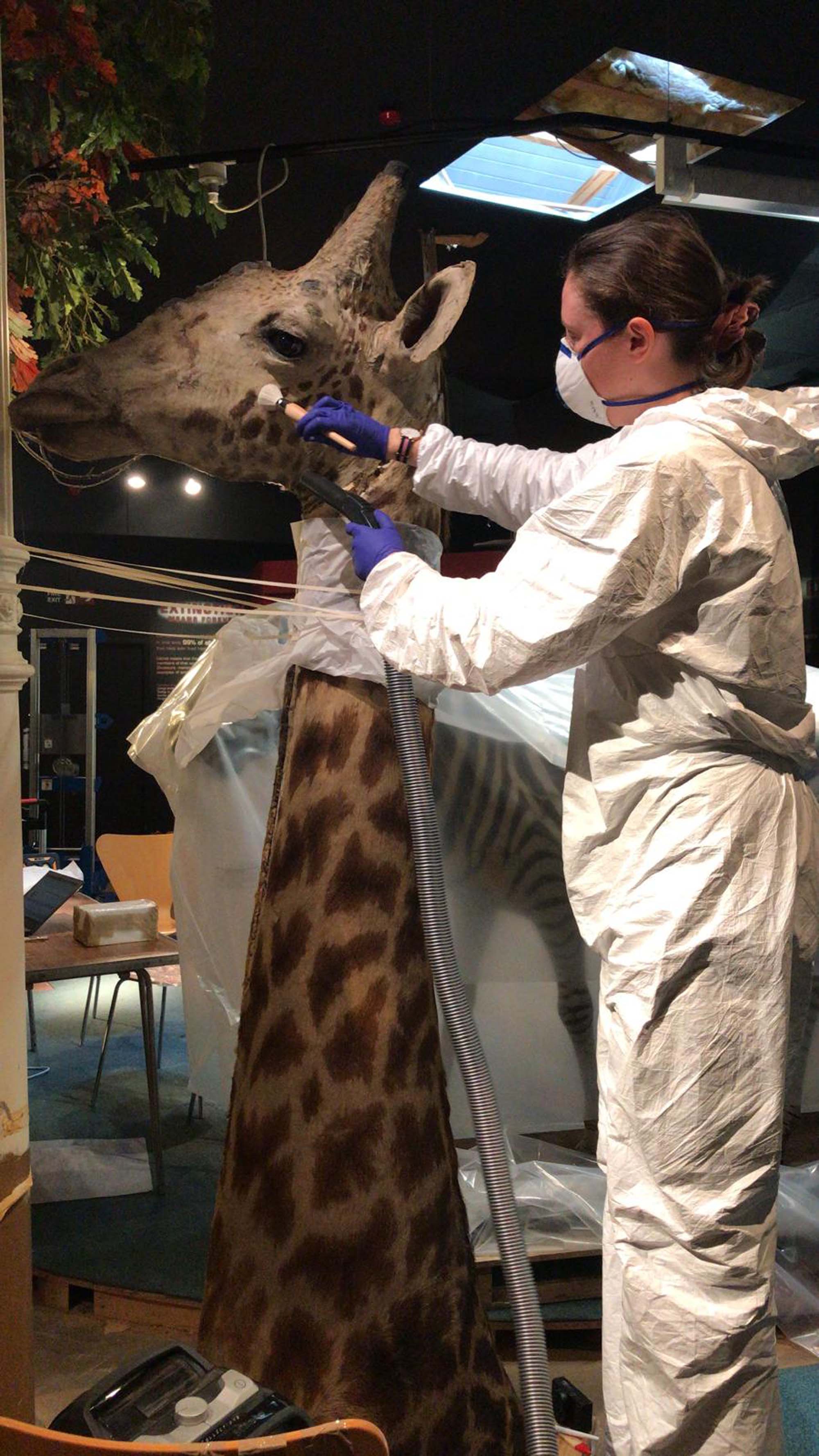
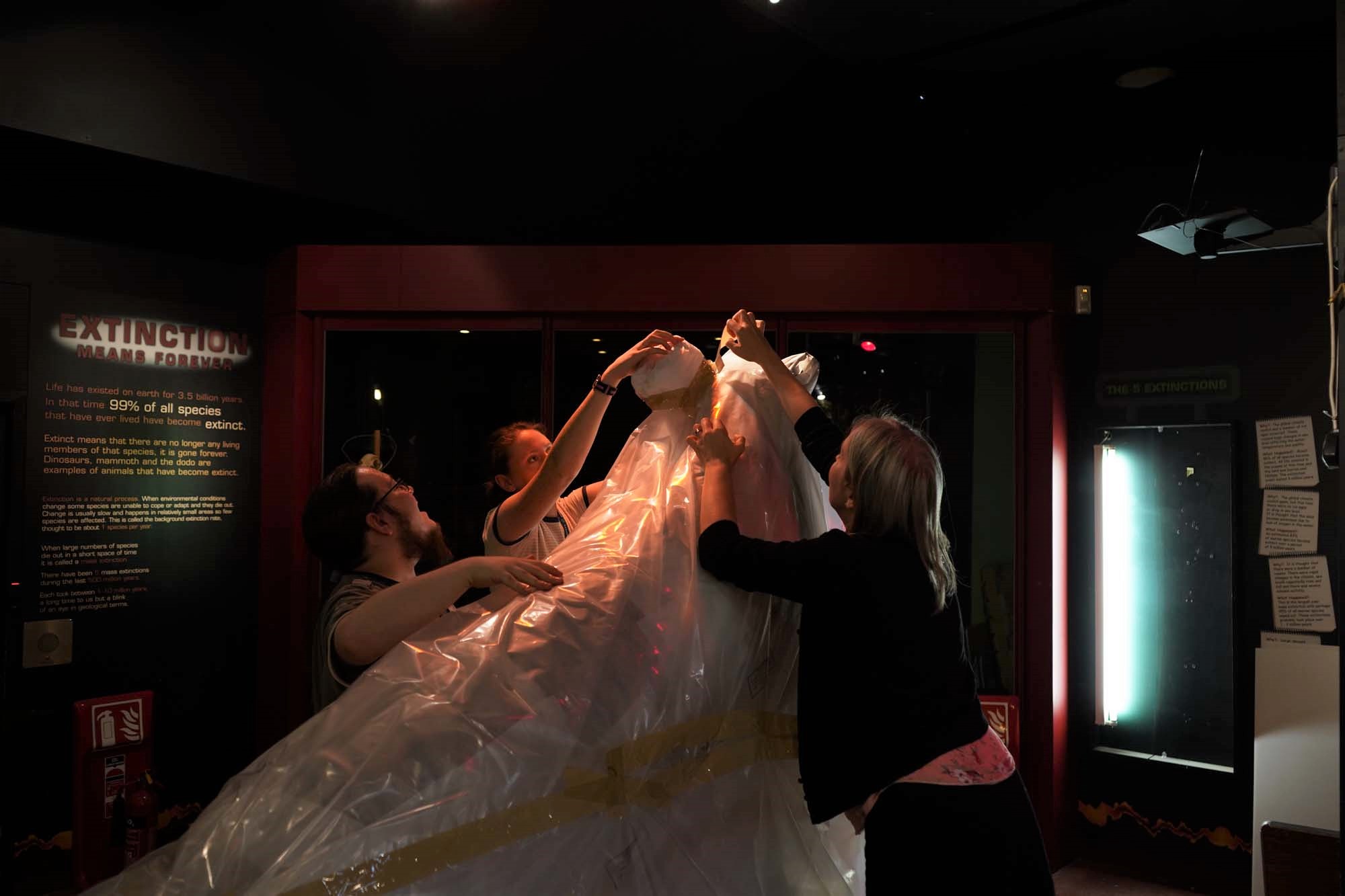
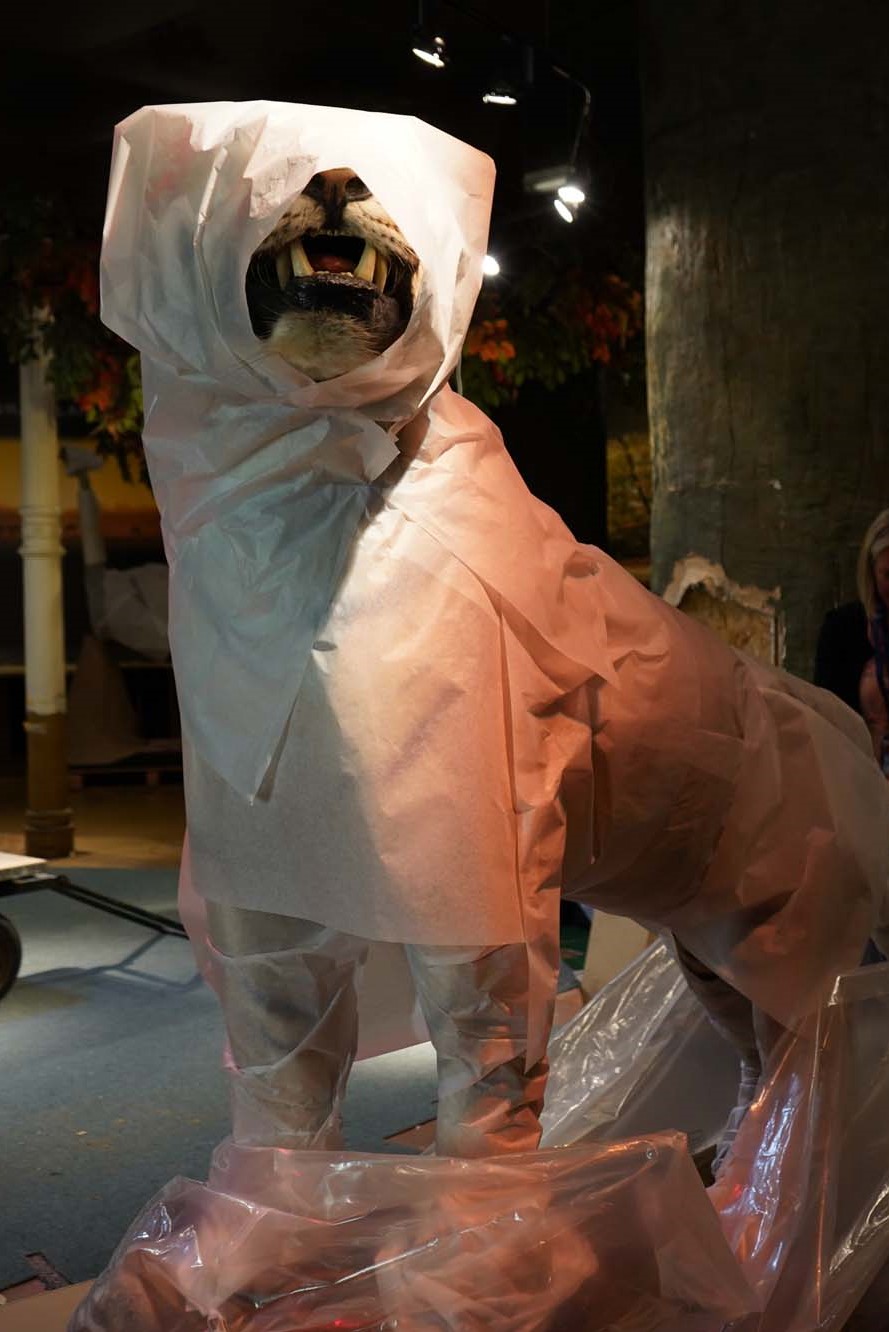
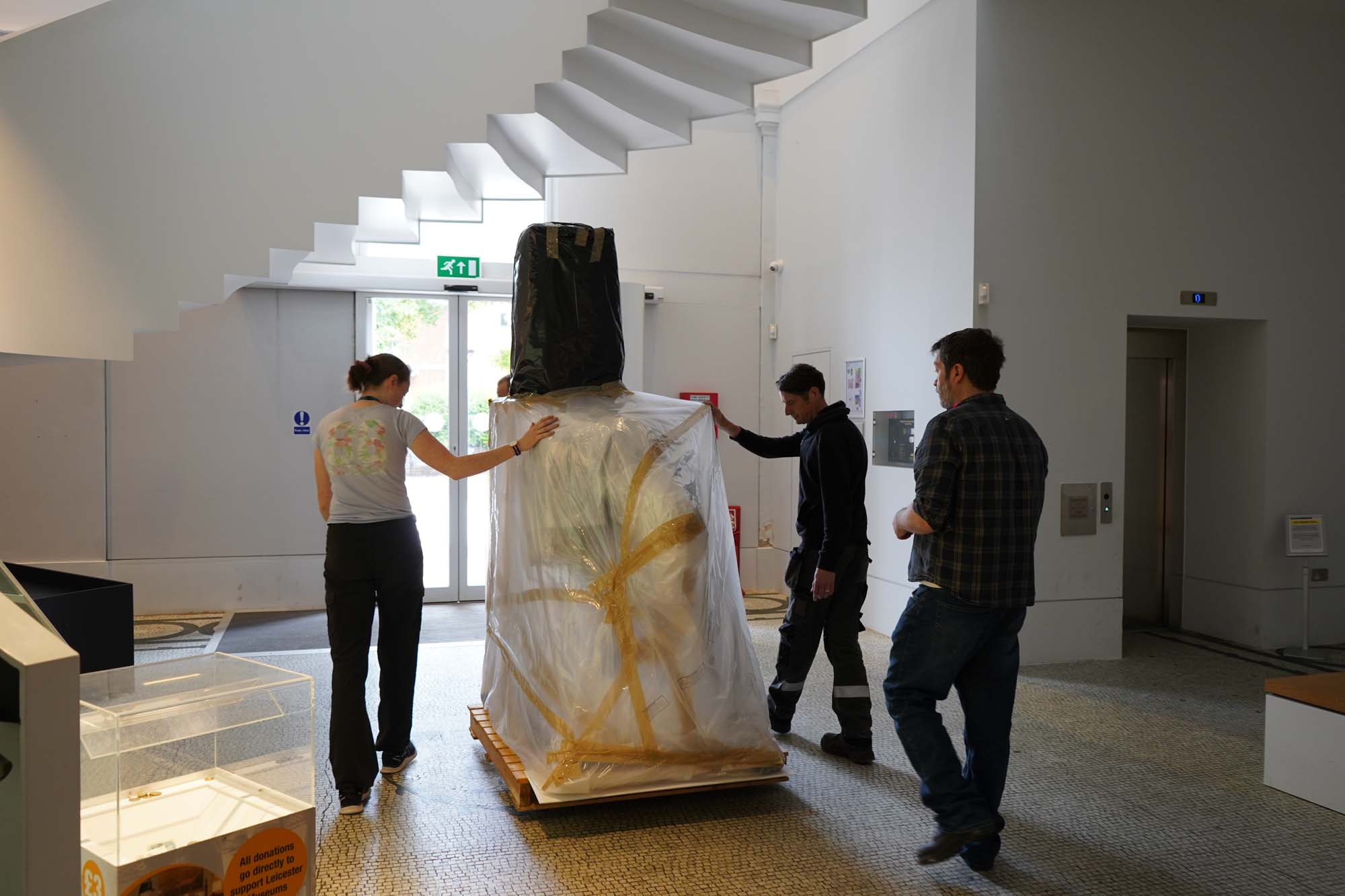
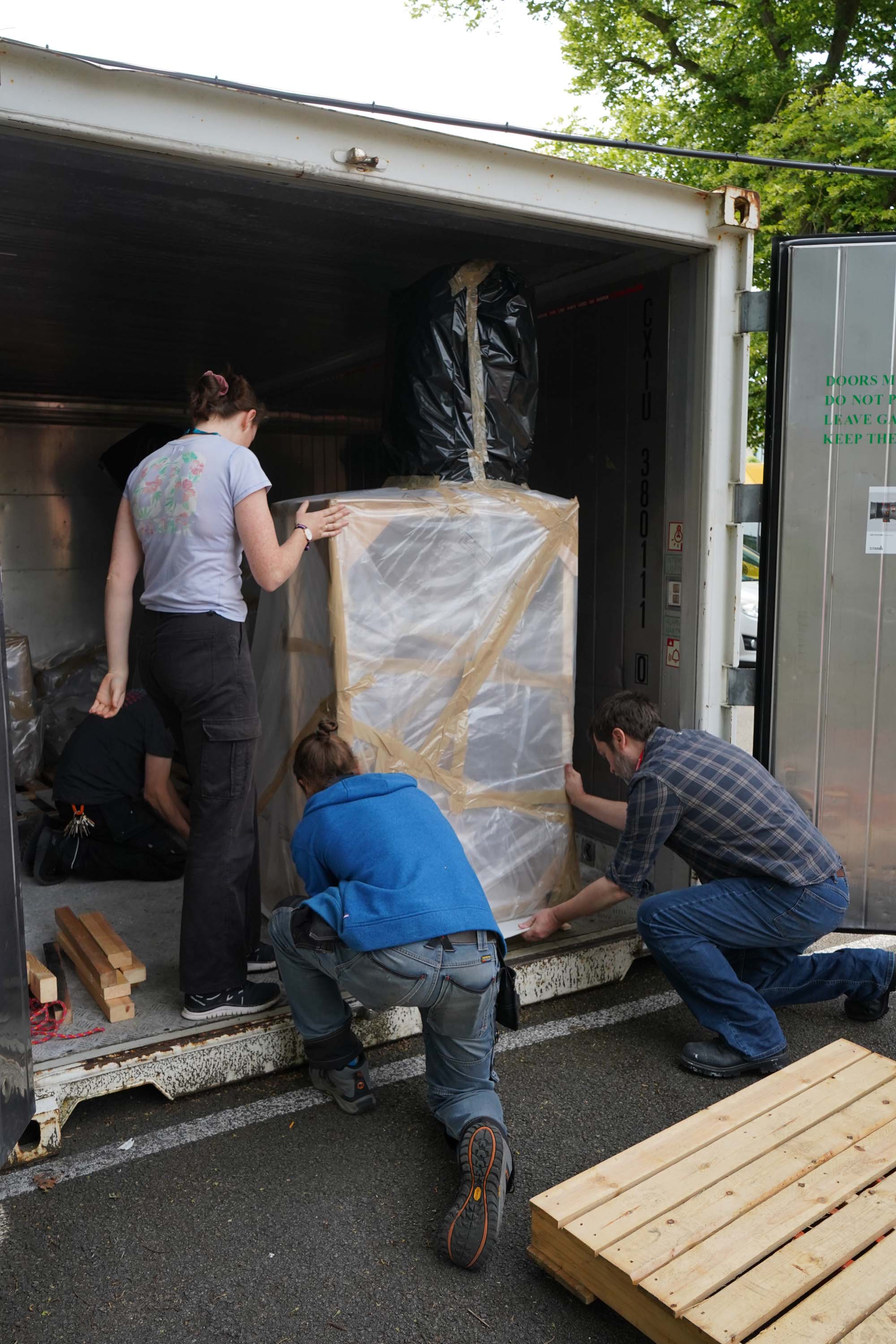
The animal specimens were cleaned using a technique called brush dusting. The dust is flicked off the specimen into the nozzle of a conservation vacuum with adjustable suction power. Whilst cleaning the team wore Tyvek suits, a mask and gloves to protect them from dust and any traces of arsenic, which was historically used to treat taxidermy.
Once the animals had been cleaned, condition checked and photographed they were covered in acid free tissue paper and double wrapped in clear plastic bags, sealing the bags shut with packing tape. Double bagging the specimens allowed the specimens to be frozen safely. The team often had to get creative with the packing process by padding delicate parts such as ears and using purpose-made wooden frames for the really challenging specimens.
The ostrich required a special two-part wooden frame to protect his long, fragile neck. It was also the tallest specimen so great care was needed when placing it in the industrial freezer. Every specimen spent a week in the –40°c freezer to kill any harmful pests. Once the specimens had all been frozen and defrosted they were transported to the museum stores where they can be seen on the next Museum Store Tours taking place this autumn.
The animals will remain in storage until they are ready to form new, modern gallery displays planned about the natural world, and the challenges they face from climate change and the environment.
Thank you to everyone involved with the project!
